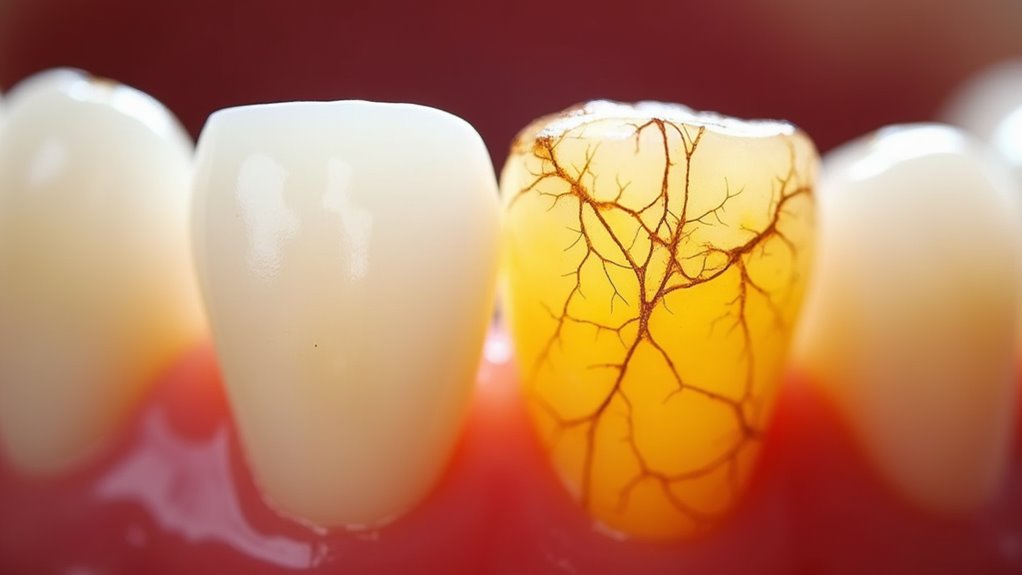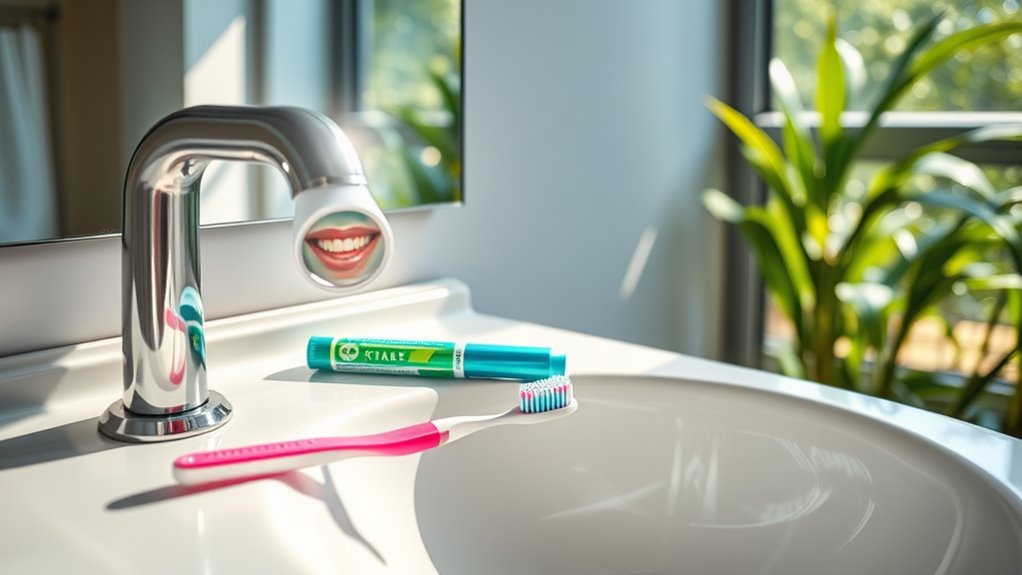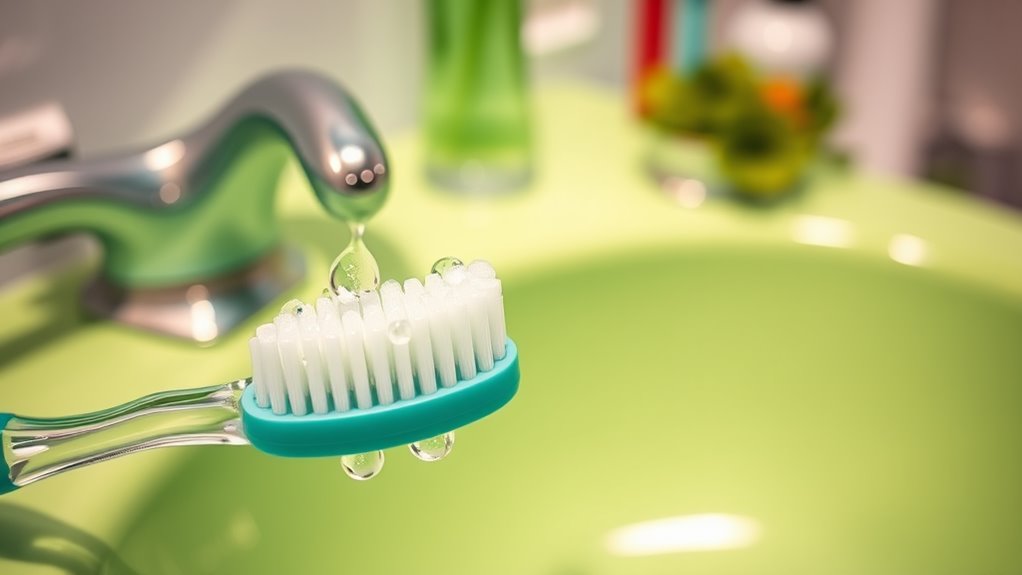The Dangerous Side Effect of Whitening Strips No One Talks About!
You’ve probably seen those whitening strips at the drugstore, promising a dazzling smile in just a few weeks. While they can brighten your teeth, there’s a concerning side effect that manufacturers don’t highlight on the packaging. Two-thirds of users don’t realize they’re risking long-term tooth sensitivity that could make simple pleasures like enjoying ice cream or sipping hot coffee genuinely painful. Before you reach for those strips, you’ll want to understand what’s really happening to your enamel.
Understanding How Whitening Strips Work on Tooth Enamel
Whitening strips contain a peroxide-based gel that penetrates your tooth enamel to break down stains into smaller pieces, making teeth appear whiter. When you apply these strips, the active ingredient seeps through tiny pores in your enamel, initiating a chemical reaction that targets both surface stains and deeper discoloration.
While this process effectively brightens your smile, it’s crucial to understand the potential whitening strips side effects on your tooth structure. The same oxidation process that dissolves stains can temporarily weaken your enamel’s protein structure, making it more susceptible to sensitivity and erosion. Frequent use of whitening products can lead to enamel erosion, which is a risk worth considering.
Think of it as a trade-off: you’re sacrificing some enamel integrity for cosmetic improvement. The good news is that your enamel typically remineralizes within 24-48 hours after treatment, but repeated exposure to whitening agents can lead to lasting damage if you don’t follow proper application guidelines and timing intervals.
The Hidden Dangers of Hydrogen Peroxide Exposure
Although hydrogen peroxide is widely used in teeth whitening products, this powerful chemical carries significant risks when misused or overused. You’re essentially applying a bleaching agent directly to your teeth and gums, which can lead to serious complications if not handled properly.
When you’re exposed to high concentrations of hydrogen peroxide, you might experience severe tooth sensitivity, gum irritation, and chemical burns on your oral tissue. The oxidizing effects can penetrate beyond the enamel, potentially damaging the dentin layer and nerve endings within your teeth.
What’s more concerning is that repeated exposure might weaken your enamel permanently. Additionally, prolonged exposure to harsh chemicals like hydrogen peroxide can lead to hormone disruption, affecting not only your oral health but your overall well-being.
You’ll want to watch for warning signs like bleeding gums, persistent pain, or white spots on your gum tissue. These symptoms indicate that you’re experiencing chemical damage and should discontinue use immediately.
It’s crucial to follow application instructions precisely and never exceed the recommended treatment duration to protect your oral health.
Research Studies Reveal Long-Term Sensitivity Issues
Recent clinical studies have uncovered troubling evidence about long-term tooth sensitivity after using whitening strips.
What you haven’t been told about tooth sensitivity from whitening strips is that it can persist long after you’ve stopped using them. Research from leading dental institutions has confirmed that repeated exposure to whitening agents can lead to chronic sensitivity issues, affecting your daily life in ways you mightn’t expect.
-
Up to 67% of users report prolonged sensitivity to hot and cold temperatures, lasting 3+ months after treatment.
-
MRI studies show microscopic changes in tooth enamel structure that don’t reverse naturally.
-
Neural sensitivity patterns indicate potential permanent changes to tooth nerve endings.
-
Research participants experienced heightened sensitivity to acidic foods and beverages for up to 6 months post-treatment.
These findings suggest it’s time to rethink the casual approach to over-the-counter whitening products and consider innovative alternatives that won’t compromise your long-term dental health. Additionally, it’s crucial to prioritize dental health by allowing teeth time to recover between whitening sessions.
Signs Your Whitening Strips Are Causing Damage
How can you tell if your whitening strips are doing more harm than good? Your teeth will send clear distress signals when whitening strips start causing damage. Watch for these critical warning signs and take immediate action if you notice them.
| Warning Sign | What It Means |
|---|---|
| Sharp, shooting pain | Enamel erosion exposing nerve endings |
| White spots on teeth | Chemical burns to tooth surface |
| Bleeding gums | Strip chemicals irritating gum tissue |
| Transparent edges | Severe enamel thinning |
| Persistent sensitivity | Damaged tooth structure |
Don’t ignore these red flags – they’re your body’s way of saying stop. Excessive use can lead to increased tooth sensitivity, which may affect your ability to enjoy hot or cold foods. Modern whitening alternatives like LED systems and naturally derived products can give you the bright smile you want without compromising your dental health. If you’ve experienced any of these symptoms, schedule a dentist appointment to assess potential damage and explore safer whitening options suited to your teeth’s unique needs.
Natural and Dentist-Approved Ways to Whiten Teeth
If whitening strips have left you wary, you’ll be relieved to know there are several safe and effective alternatives endorsed by dental professionals. Modern dentistry offers innovative solutions that won’t compromise your enamel or gum health while still delivering impressive results.
-
Professional LED whitening treatments combine specialized gel with advanced light technology, offering dramatic results in just one office visit while protecting sensitive tooth structures.
-
Custom-fitted whitening trays, precisely molded to your teeth, ensure even application and controlled exposure to dental-grade peroxide formulas.
-
Activated charcoal toothpaste containing nano-hydroxyapatite particles helps rebuild enamel while gradually removing surface stains through gentle polishing action.
-
Oil pulling with organic coconut oil, combined with enzymatic whitening toothpaste, creates a dual-action approach that both detoxifies and brightens your smile naturally.
Additionally, incorporating vitamin D into your diet can further enhance your dental health, supporting strong tooth enamel during your whitening journey.
These methods deliver reliable results without the risks associated with over-the-counter whitening strips, making them smart choices for those seeking a brighter smile.




